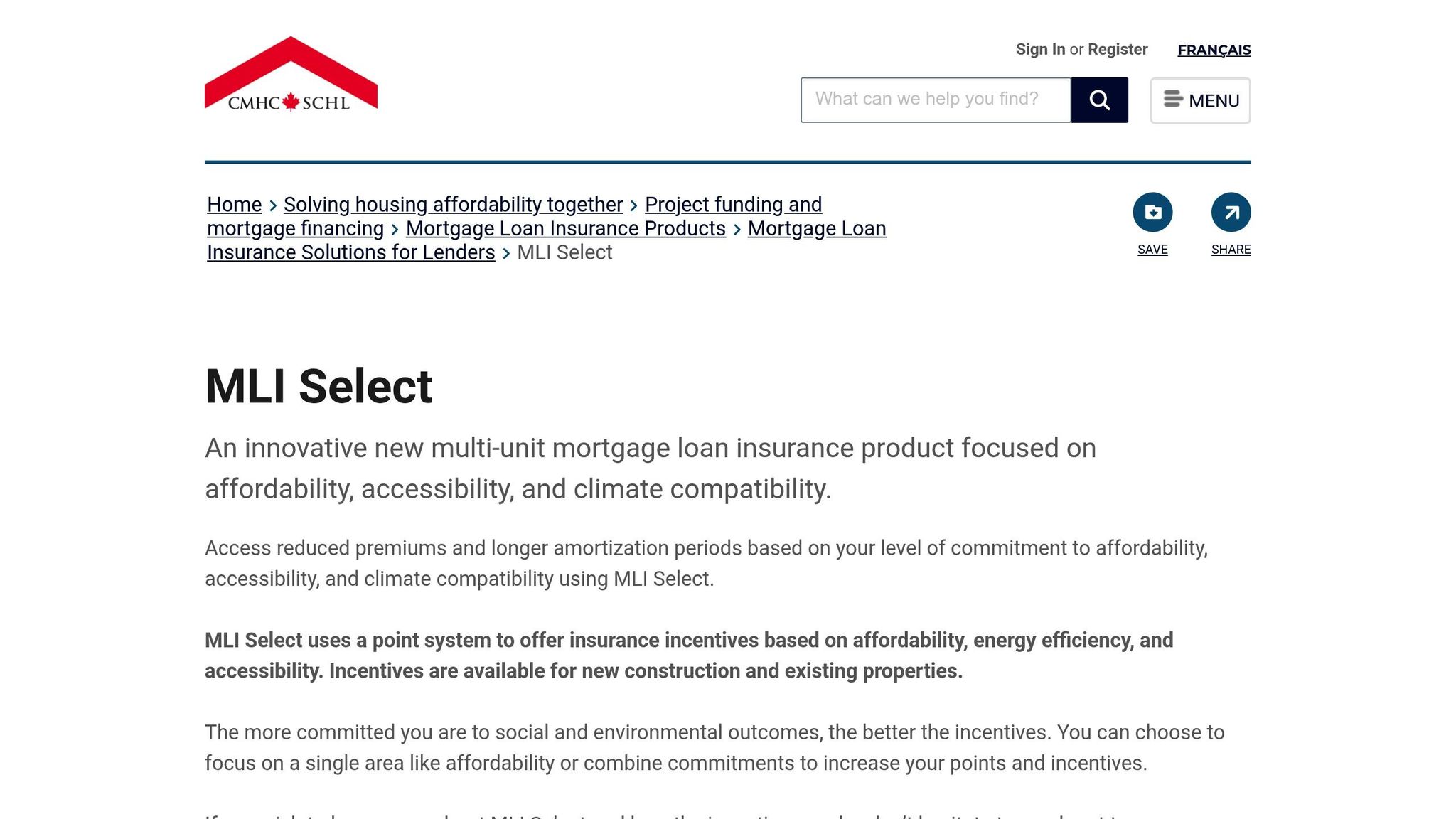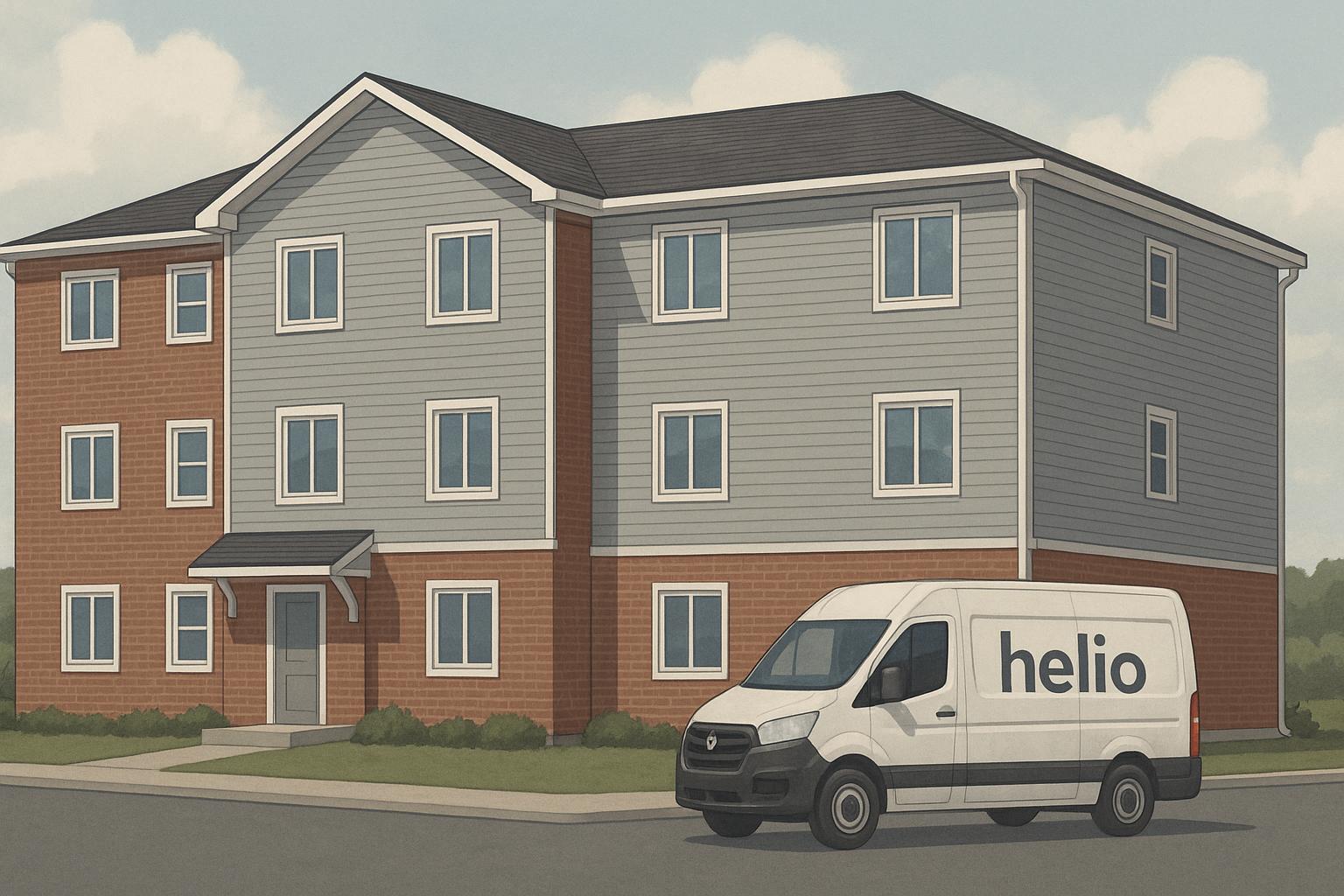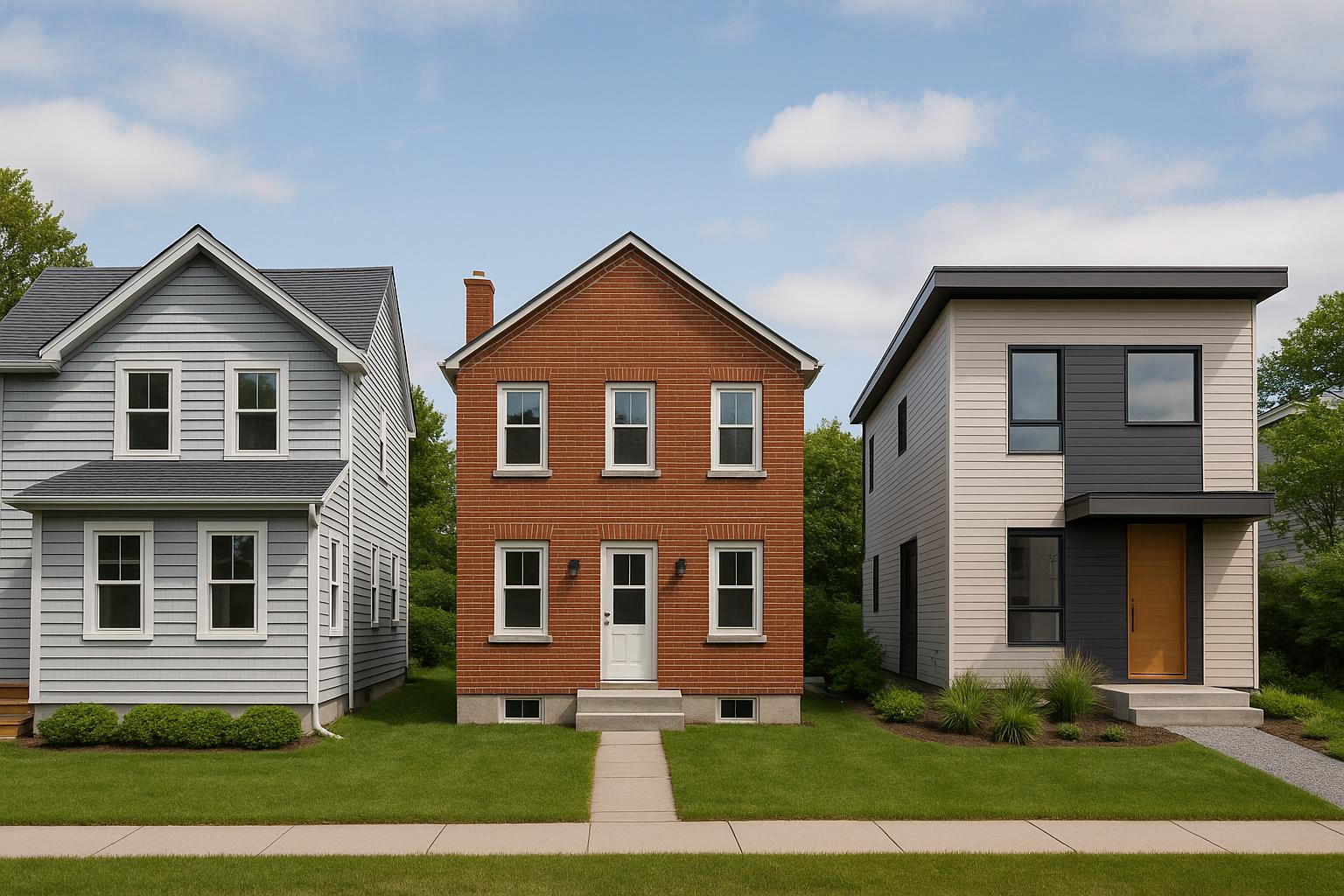Mixed-use developments in Nova Scotia’s COR Corridor are struggling with delays and rising costs, especially when adding retail spaces to residential projects. Key challenges include skyrocketing construction costs, lengthy approval processes, and misaligned schedules caused by managing multiple contractors. These issues often lead to budget overruns and missed deadlines, jeopardizing profitability.
The Solution
A unified construction approach - treating residential and retail components as one project - can resolve these challenges by:
- Integrating planning from the start: Aligning design, engineering, and construction to prevent conflicts and reduce delays.
- Using advanced scheduling tools: Daily updates and progress tracking catch issues early.
- Streamlining contracts: A single team accountable for the entire project ensures clear communication and consistent quality.
Helio’s Integrated Design-Build Model
Helio Urban Development simplifies the process with:
- Fixed pricing at $160,000 per unit and no cost overruns.
- 6-month timeline guarantees with penalties for delays.
- One contract for all services, eliminating coordination headaches.
- Daily photo updates and quality checks for transparency.
By reducing timelines and costs, Helio helps property owners maximize profitability while meeting tenant and market demands. Their approach is particularly effective for projects eligible for financing programs like CMHC’s MLI Select, which offers up to 95% financing for energy-efficient buildings.
Bottom line: A unified construction strategy not only minimizes delays and costs but also ensures smoother project execution, making retail integration more feasible and profitable in Nova Scotia’s competitive market.
Build to Rent Mixed-Use Case Study: Breaking Down a 16-Unit Ground Up Development!
Common Problems When Adding Retail to Multi-Unit Developments
Adding retail spaces to multi-unit developments can be tricky, especially when the residential and retail components aren't fully aligned. This lack of coordination often leads to scheduling headaches, unclear responsibilities, and unnecessary complications. Let’s break down some of the main challenges that can throw off timelines and budgets.
Misaligned Schedules and Multiple Contracts
When different contractors handle separate parts of the project, schedules often clash. Imagine one team finishing their work while another isn’t ready to start - this kind of misstep can stall progress. On top of that, juggling multiple contracts often means dealing with mismatched payment terms and higher carrying costs, adding financial strain to the project.
Lack of Central Accountability
Without a single person or team overseeing the entire project, delays and miscommunication can spiral out of control. Contractors might pass the buck when issues arise, making it harder to resolve problems quickly. Tasks like coordinating permits, inspections, and move-ins become chaotic without someone in charge. Quality control can also suffer, with inconsistencies between contractors sometimes only becoming apparent late in the project. This can lead to costly fixes or rework.
And if management challenges weren’t enough, developers also face a maze of regulations and market demands.
Navigating Nova Scotia’s Regulations and Market Needs
In Nova Scotia, mixed-use developments must comply with a host of regulations and market expectations. Building codes often require specific features, like fire separation and accessibility measures, which demand careful planning. Municipal approvals add another layer of complexity, potentially throwing off schedules. Developers in the COR Corridor also need to consider zoning rules, such as height limits and parking requirements, to balance the needs of both residential and retail spaces. Strategic planning is key to keeping everything on track while meeting these demands.
How to Coordinate Retail Construction Without Delays
The secret to keeping retail construction projects on schedule is treating the entire mixed-use development as one unified project - not as separate residential and retail ventures. This mindset helps avoid the scheduling conflicts and miscommunication that often derail timelines and inflate costs. Below, we’ll explore how comprehensive planning, smart scheduling, and thoughtful design can work together to keep everything moving smoothly.
Plan Everything Together from the Start
Starting with a unified plan is crucial to avoiding early missteps and addressing the fragmented schedules that often plague traditional construction. By involving your planner, architect, engineer, and construction team from the very beginning, you can identify and resolve potential conflicts before they escalate.
- Avoid costly mid-project changes. Coordinating utilities and structural elements upfront reduces the need for disruptive and expensive redesigns later on.
- Speed up municipal approvals. Submitting a complete, well-coordinated application that addresses zoning rules, building codes, and accessibility standards can significantly shorten the approval process. A comprehensive approach minimizes back-and-forth with municipal offices, keeping your project on track.
Leverage Advanced Scheduling and Daily Updates
Unified planning sets the stage, but advanced scheduling tools and consistent progress tracking keep things running smoothly. Modern scheduling systems map out every task across both residential and retail components, highlighting dependencies and potential conflicts before they cause delays.
- Daily updates catch issues early. Requiring daily photos and progress reports from the construction team ensures that any problems are spotted and addressed immediately. This level of transparency allows for quick course corrections, preventing small issues from becoming major setbacks.
- Consistent quality control. Having one team oversee the entire project means uniform standards across residential and retail spaces. Plus, a single warranty for the whole development simplifies long-term maintenance and accountability.
Focus on Walkability and Street Appeal
Retail spaces that blend seamlessly with surrounding infrastructure not only enhance tenant success but also make construction coordination easier. When elements like entrances, sidewalks, and parking are integrated into the overall site plan, the construction process becomes far more efficient.
- Plan for street-level access. Retail spaces need clear sidewalk access and visibility from the street. Incorporating these requirements into the initial design ensures logical construction sequencing, avoiding costly adjustments down the line.
- Streamline parking and utilities. Coordinating residential and retail parking, as well as integrating utility needs like commercial equipment and separate metering, reduces the need for disruptive trenching or electrical work later.
A cohesive design also simplifies construction. When retail storefronts complement the residential architecture above, teams can use consistent materials and finishes. This reduces complexity and avoids delays caused by juggling different aesthetic approaches. Plus, the end result is a visually appealing development that benefits both tenants and the community.
sbb-itb-16b8a48
Helio's Integrated Design-Build Solution: A Game-Changer
Traditional construction often leaves property owners juggling multiple contractors, which can lead to a mess of miscommunication and delays. Helio Urban Development flips this script by uniting planners, architects, engineers, and construction teams under one roof. This approach eliminates the coordination headaches that frequently disrupt retail construction projects in Nova Scotia's COR Corridor.
Their integrated design-build model tackles the usual issues with mixed-use developments: disjointed communication, conflicting schedules, and the blame game when things go wrong. Instead of managing several contracts, property owners work with a single, accountable team responsible for delivering both residential and retail spaces on time and within budget. Let’s dive into how Helio’s approach addresses common challenges with fixed pricing, streamlined contracts, and rigorous quality control.
Fixed Prices and 6-Month Timeline Guarantees
One of Helio's standout features is its fixed pricing model. They lock in pre-construction costs at $160,000 per unit, removing the uncertainty that plagues traditional construction budgets. Even better, they guarantee project completion within six months. If they miss that deadline, Helio pays penalties of up to $1,000 per day for delays.
This guarantee protects property owners from the financial strain of extended timelines. For example, delays in mixed-use developments can cost property owners around $8,800 per month in lost rental income. When retail spaces miss tenant move-in deadlines, the financial impact can snowball. Helio’s penalty structure ensures they’re just as invested as the property owner in meeting every milestone.
Their fixed pricing also eliminates the cost overruns that typically range from 30–60% in traditional construction. By knowing the exact cost upfront, property owners can secure financing more easily and better plan their returns. This is particularly important for retail spaces, where tenant fit-out schedules depend on precise project completion dates.
One Contract, One Company, One Point of Contact
Coordinating retail and residential construction often requires property owners to manage separate architects, engineers, contractors, and specialty trades - all with their own priorities and timelines. When problems arise, figuring out who’s responsible can become a costly blame game.
Helio simplifies this by handling everything internally. Property owners work directly with co-founder Lloyd Liu, who oversees all projects and reviews every quote. Liu’s background as an investment banker at Merrill Lynch, combined with experience managing over $30 million in construction projects, gives him a deep understanding of both the financial and operational sides of development.
This single-point accountability extends beyond construction. Helio offers a two-year warranty covering both residential and retail spaces, so property owners don’t have to track down multiple contractors for maintenance issues. This centralized responsibility ensures consistent quality and simplifies long-term support.
Daily Updates and Quality Control
Retail tenants often depend on precise timelines to open their businesses, making transparency a must. Helio provides real-time daily photo updates, allowing property owners to monitor progress and address potential issues before they become bigger problems.
Their three-stage quality verification process includes inspections by a Professional Engineer at five critical stages, along with a final inspection selected by the property owner. This ensures that retail spaces meet the higher standards required for commercial use, whether it’s advanced electrical systems for restaurant equipment or proper ventilation.
Co-founder Yuan He, a data scientist from the University of Pennsylvania, developed advanced scheduling systems to avoid the delays common in traditional construction. This method reduces typical construction timelines from 12–18 months to just six months, giving retail tenants more predictable opening dates and helping property owners start earning rental income faster.
| Traditional Multi-Contract Approach | Helio Integrated Design-Build |
|---|---|
| Multiple contracts to manage | One contract, one company |
| No timeline guarantees | 6-month guarantee with penalties |
| Variable pricing, frequent overruns | Fixed pricing, no surprises |
| Fragmented communication | Daily updates, single point of contact |
| Diffuse accountability | Full project responsibility |
Currently, Helio is managing 31 units under construction across Nova Scotia, with another 131 in the planning stages. Serving property owners within 90 minutes of Halifax, Helio transforms what’s often a stressful, delay-ridden process into a streamlined experience that boosts profitability.
Maintaining Profitability When Adding Retail Components
Adding retail spaces to a development can increase long-term returns, but success hinges on keeping tight control over costs and timelines.
Why Fixed Timelines and Budgets Matter
Retail tenants often plan their openings well in advance, signing leases tied to specific timelines. Construction delays can disrupt these plans, risking rental income and tenant relationships. Even a short delay in a four-unit project could cost tens of thousands of dollars, not to mention potential penalties linked to lease agreements.
Fixed pricing helps eliminate the uncertainty that often comes with traditional construction projects. Industry data shows cost overruns can range from 30–60%, which, for a fourplex project, could mean unexpected expenses of $192,000 to $384,000. These kinds of overruns make it harder to secure favourable financing and accurately predict returns.
Guaranteed timelines add another layer of financial security. They ensure on-time delivery, protecting rental income and making it easier to leverage financing programs that can further strengthen the project's financial outlook.
Using CMHC MLI Select and Other Financing Programs

Fixed pricing is just one way to secure profitability - government-backed financing options can also make a big difference. For example, the CMHC MLI Select program offers attractive terms for energy-efficient, multi-unit buildings that include retail spaces.
Developers who meet MLI Select criteria can qualify for up to 95% financing, requiring only a 5% down payment compared to the usual 20–25%. On an $800,000 mixed-use project, this reduces the upfront cash investment from $160,000–$200,000 to just $40,000. The program also allows for 50-year amortization periods, significantly lowering monthly carrying costs.
Helio’s MLI Select construction package, priced at $200,000 per unit, delivers energy efficiency that exceeds standard building codes by 40%. While this represents a $40,000 premium per unit over standard construction, the financing benefits often result in positive cash flow from day one. With reduced monthly payments and rental income from both residential and retail spaces, the financial advantages become clear.
However, the MLI Select application process requires detailed documentation and energy modelling, which many traditional contractors may not provide. Helio simplifies this process, ensuring the project meets energy efficiency standards while maximizing profitability.
Key Numbers to Track Project Success
Tracking the right metrics ensures that integrated planning and financing deliver measurable results. For mixed-use developments, these are the numbers to watch:
- Cost per unit: Helio offers fixed pricing at $160,000 per unit for standard builds or $200,000 per unit for MLI Select projects, providing full transparency for ROI and financing calculations.
- Timeline milestones: Delays can eat into profits by postponing rental income. Helio’s advanced scheduling systems and daily photo updates allow property owners to monitor progress and address potential issues immediately.
- Projected rental yields: In Nova Scotia’s COR Corridor, well-designed two-bedroom units typically rent for $1,950 to $2,100 per month. With fixed budgets and timelines, mixed-use properties in this area often achieve annual returns of 12–20%.
Conclusion: Better Retail Coordination Means Better Results
In Nova Scotia's COR Corridor, integrated construction has proven to deliver better results. Property owners opting for integrated construction methods instead of traditional fragmented approaches often see stronger returns and more reliable outcomes.
With integrated design-build solutions, property owners benefit from fixed pricing and guaranteed timelines. For those developing fourplexes with retail spaces, this approach minimizes unexpected costs and protects rental income from delays, ensuring projects stay on track financially.
One of the biggest advantages is single-contract accountability. When design, engineering, and construction teams operate under one umbrella, it eliminates the confusion and inefficiencies that often arise from juggling multiple contractors. This unified structure ensures smoother communication, quicker decisions, and consistent quality control throughout the project.
A great example of this is the Village Cores in East Hants. These developments showcase the potential of walkable mixed-use spaces that meet community needs while delivering strong financial returns [1]. By adopting systematic construction practices - like advanced scheduling, daily progress monitoring, and guaranteed delivery - property owners can tap into growing demand while keeping their profitability predictable.
The key to success lies in choosing builders who prioritize transparency, fixed pricing, and guaranteed timelines. Look for those who provide daily updates, enforce timelines with financial penalties, and eliminate surprises with fixed-price contracts. The coordination challenges that have long complicated retail integration can be effectively resolved with the right structured approach.
FAQs
What makes Helio Urban Development's design-build model a better choice for multi-unit projects?
Helio Urban Development uses an integrated design-build model that brings design and construction together into a unified process. By doing so, it removes the hassle of juggling multiple contracts, cutting down on miscommunication, delays, and surprise expenses.
With a single point of accountability overseeing everything, this approach offers shorter timelines, consistent costs, and efficient coordination. It's a smart choice for multi-unit developments in Nova Scotia, where sticking to schedules and working efficiently are key to getting projects done right.
What financial advantages come with using fixed pricing and guaranteed timelines for mixed-use developments?
Using fixed pricing and guaranteed timelines in mixed-use developments offers clear financial advantages, helping property owners stay organized and on budget. With fixed-price contracts, you know the total project cost upfront. This eliminates the risk of unexpected expenses, making it easier to plan financially and avoid any nasty surprises.
Guaranteed timelines, on the other hand, ensure your project stays on schedule. This reduces the financial impact of delays and helps you avoid missing out on revenue opportunities. By adhering to a set timeline, you can protect your bottom line, reassure investors and stakeholders, and keep the development process running smoothly and predictably.
What is the CMHC MLI Select program, and how can property owners qualify for its benefits?
The CMHC MLI Select program aims to assist property owners in developing multi-unit residential projects that emphasize affordability, energy efficiency, and accessibility. To participate, property owners need to earn at least 50 points across these focus areas by meeting specific criteria, such as implementing energy-saving designs or adding accessible features.
This program comes with plenty of perks, like lower mortgage insurance premiums, improved financing terms, and rewards for energy-efficient, sustainable construction. These incentives not only boost the profitability and long-term value of developments but also support environmentally conscious building practices.



